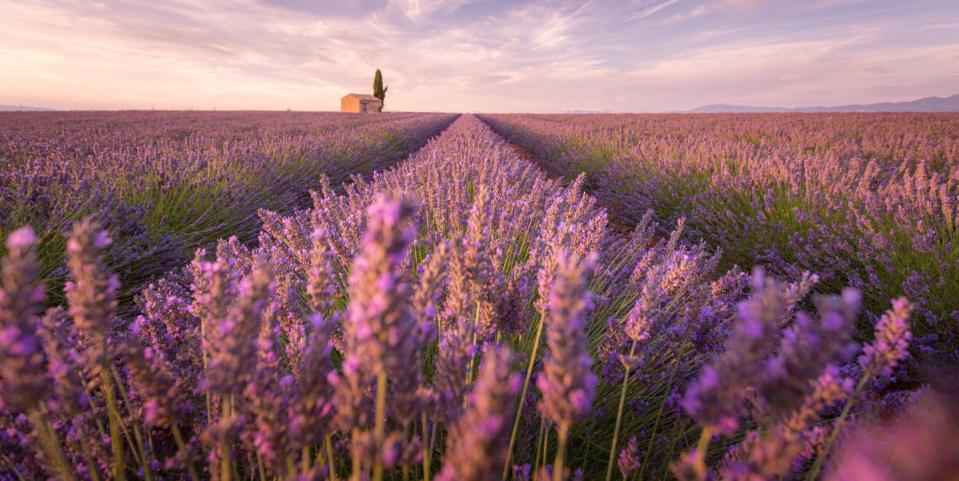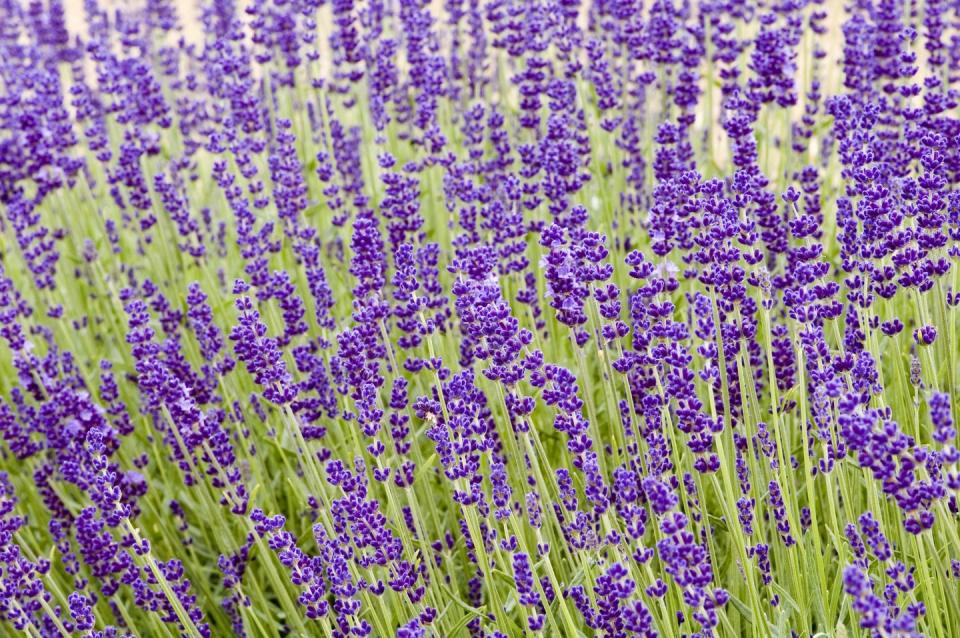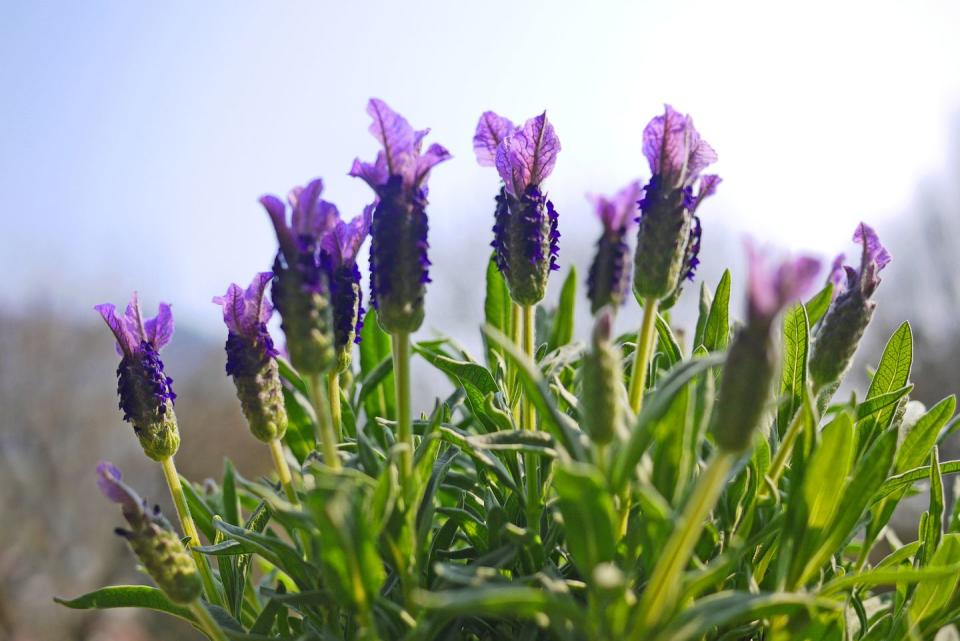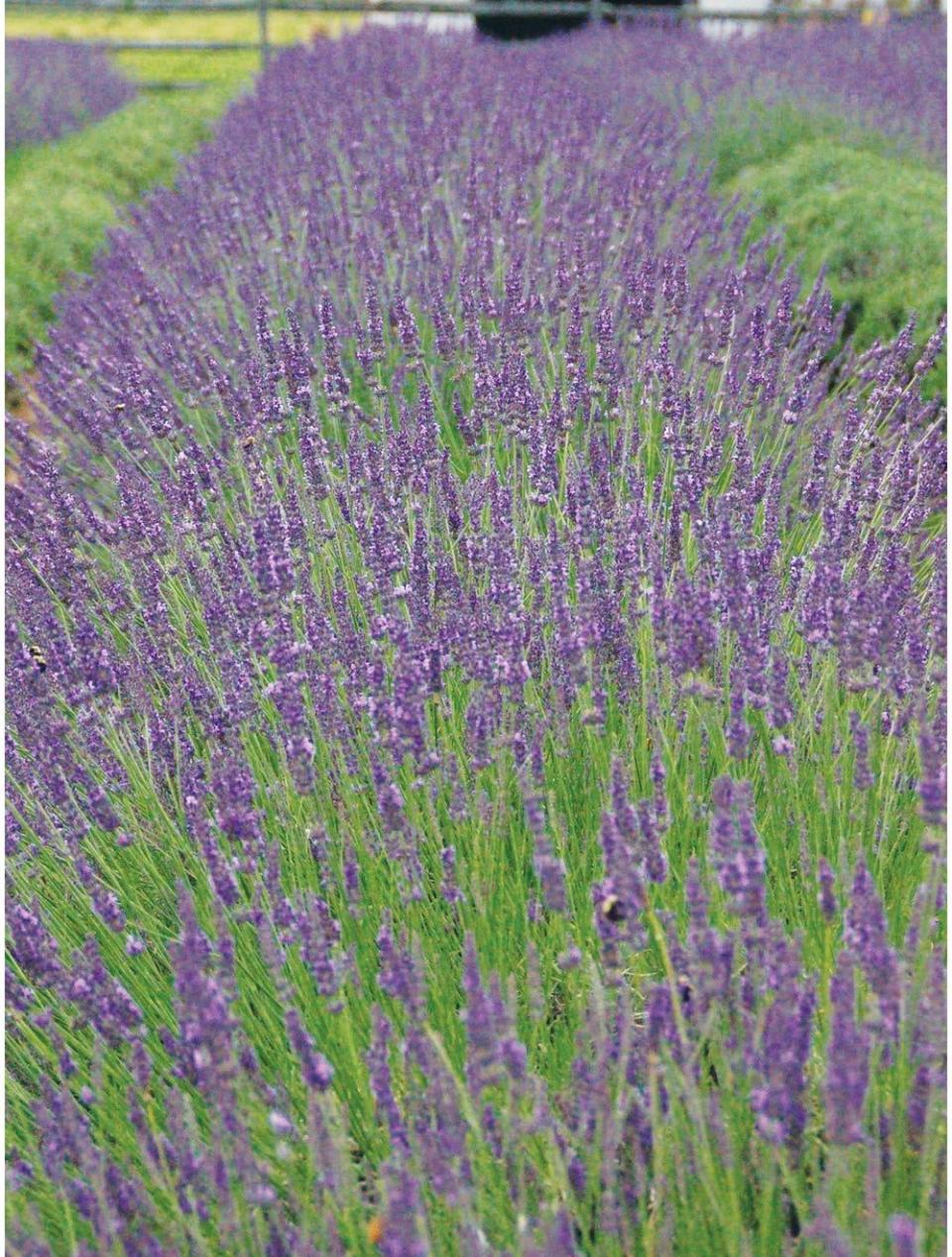Turn Your Garden into a Center of Calm with Our Lavender Grow Guide

"Hearst Magazines and Yahoo may earn commission or revenue on some items through these links."
If you had to choose only one herb to put in your garden, you could do a lot worse than lavender. This gorgeous, aromatic, and tasty plant manages to check nearly every box in a gardener's wish-list.
It's beautiful, with strikingly vibrant purple flowers. It smells amazing, with a delicate scent that adds distinction to bouquets and baked goods alike. And it has dozens of uses everywhere from the laundry room to the kitchen to the spa.
Some people even use it as an insect repellant and a disinfectant!
It has so many uses, because, as research has shown, lavender contains helpful phytochemicals (a.k.a. plant chemicals) such as linalool, which have antioxidant, antifungal and antibacterial properties.
Other studies have shown the fragrance of lavender can boost mood in both people and animals.
Even better, lavender is a Mediterranean native, and is not difficult to grow, but you do want to choose the right type of lavender plant for your USDA Hardiness zone (find yours here) and give it the right conditions.
There are several different types of lavender, so this is one time you’ll need to pay attention to the botanical names.
Lavender typically blooms in late spring to mid-summer, depending on the type. It grows equally well in beds with other herbs, in rock gardens, as a low edge along a path. You can even put it into landscape beds and pots. It’s also spectacular when massed!
Of course, pollinators love lavender—and better yet, deer and rabbits tend to leave it alone because of its semi-fuzzy foliage and strong fragrance, which is not appealing to them.
Here’s everything else you need to know about how to plant and grow lavender:
What kind of lavender should I grow?
Most lavenders grow in a shrubby mound form. Some are less than a foot, and others are several feet tall. Fortunately, many new cultivars, or cultivated varieties, have been introduced in recent years with improved tolerance to harsh conditions.
Different lavenders are grown for different uses. Some are grown to eat, and others for their look. Still others are grown to be used in soaps or scented crafts. Because of the sheer number of types, you should read the plant tag or description so you’ll know what you’re buying. That way you can choose the lavender that will yield what you want and grow best in your climate:

English or Hidcote lavender (Lavandula angustifolia) tolerates northern winters and is very fragrant, so it’s the type of lavender harvested for its oils; USDA Hardiness zones 5 to 8

Lavandin (Lavandula x intermedia) a hybrid lavender that also tolerates cold and is less needy than English lavender; it’s the type of lavender often used for drying; USDA Hardiness zones 5 to 9

Spanish lavender (Lavandula stoechas) has cute tufted flowers and does better in hot, humid climates; it’s grown mostly for its showy flowers; confusingly, it’s also sometimes called French lavender or butterfly lavender; USDA Hardiness zones 8 to 10

French lavender (Lavandula dentata) is more difficult to find; it also has tufts on top but has a more rosemary-like scent so it’s used for sachets; this type of lavender usually is grown as an annual, though it may survive as a perennial in USDA Hardiness zones 8 to 9
How do I grow lavender?
Find a spot in full sun, which is considered 6 or more hours of direct sunlight per day. Lavender does not do well in shady locations.
According to experts at the University of Michigan Extension, Lavender thrives in sandy, gravelly conditions. But heavy clay, which doesn't drain well, will hold too much water to it. So you’ll need to dig up the area and till in some compost to improve the soil texture before planting. You can also save yourself some work and plant in pots.
When planting lavender transplants, dig a hole about twice the size of the root ball, then place the plant in at the same level it was in the container. Backfill the soil and tamp down. Make sure to leave plenty of space between lavender plants, too, because they don’t like to be crowded together.
Water your plants well after planting and occasionally throughout the first season to help the roots get established. It’s better not to mulch, however. Lavender likes dry environments and mulching keeps the roots too wet.
Also, don’t bother to fertilize, which actually can produce weak growth that is vulnerable to winter kill.
Can I grow lavender from seed?
Lavender can be grown from seed, but you’ll need patience: It can take several years for the plants to mature enough to bloom. If you want to enjoy the flowers sooner, you’re better off purchasing lavender plants.

Lavender, Phenomenal®
$13.95
burpee.com
Should I prune my lavender?
In the spring, trim back to the new green growth, never into the woody part of the plant. Jonathan Foster at the University of Maine Extension notes that If you prune too aggressively, you may kill your lavender plant. It can be slow for new growth to appear in spring, so don’t get impatient!
What can I do with lavender?
If you like, harvest your flowers when a few buds on each stem have opened. Tie the stems together and hang upside down away from light. Or just display them in a vase. Once lavender is totally dry, rub the stem to remove the flower, and save them in a small, lidded jar to use for cooking, sachets, and baths.
Looking for more ideas? Here are 30 great ways to use lavender!
You Might Also Like

 Yahoo Sports
Yahoo Sports 